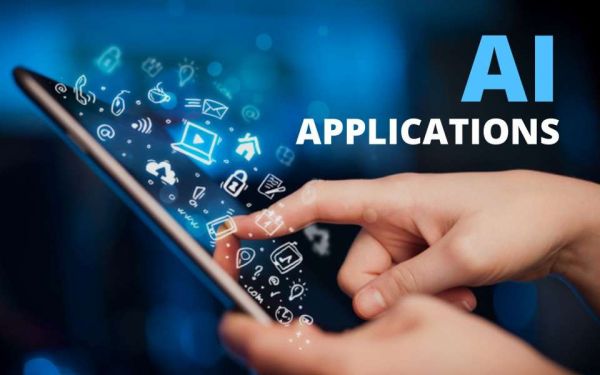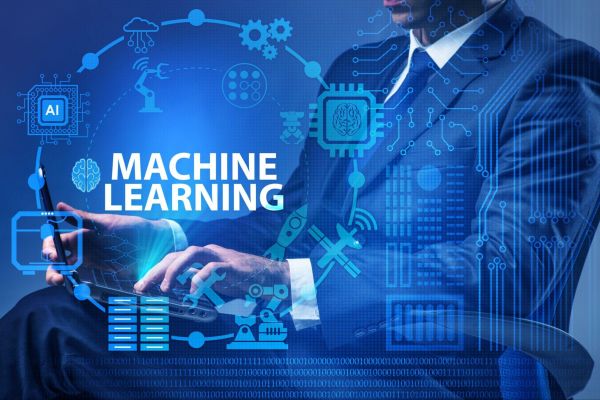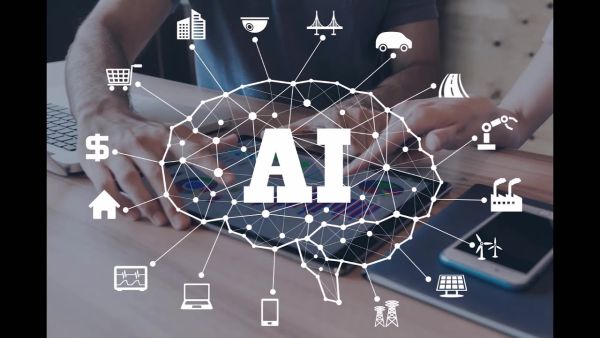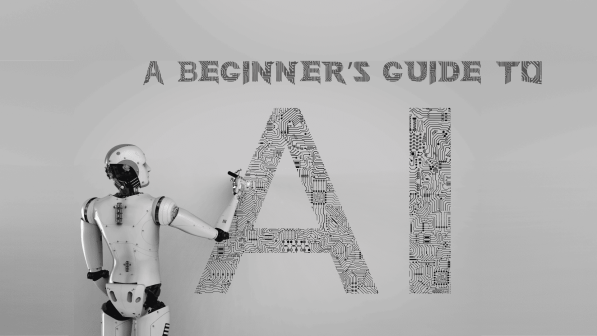Introduction
Artificial Intelligence (AI) is revolutionizing various aspects of our lives, from personalized recommendations on streaming platforms to sophisticated problem-solving in industries like healthcare and finance. For beginners, diving into the world of AI can seem daunting, but with a structured approach, the first ten hours can be incredibly productive and enlightening. This guide will walk you through how to make the most of your initial foray into AI, providing a comprehensive roadmap for your journey.
Understanding the Basics
Key Concepts to Explore
Artificial Intelligence (AI): The broad area of computer science focused on creating systems capable of performing tasks that usually require human intelligence. This encompasses a wide range of activities such as visual perception, speech recognition, decision-making, and language translation.
Machine Learning (ML): A subset of AI that involves training algorithms to learn from and make predictions based on data. Machine learning is the driving force behind many AI applications, enabling systems to improve their performance over time as they are exposed to more data.
Deep Learning: A type of machine learning involving neural networks with many layers, which is particularly powerful for tasks like image and speech recognition. Deep learning has gained prominence due to its ability to process and derive insights from large amounts of unstructured data.
Before you start working with AI, it’s crucial to understand these foundational concepts. AI involves creating systems that can perform tasks that typically require human intelligence, and it encompasses a broad spectrum of technologies and methodologies. By grasping these basic ideas, you will be better prepared to navigate the complexities of AI.
Familiarizing Yourself with AI Applications
Understanding the practical applications of AI can provide context and motivation. AI is used in various fields, each offering unique opportunities and challenges:
Healthcare: AI is transforming healthcare by diagnosing diseases, personalizing treatment plans, and predicting patient outcomes. For example, AI algorithms can analyze medical images to detect anomalies, assist in robotic surgeries, and monitor patient health through wearable devices.
Finance: In finance, AI is used for fraud detection, algorithmic trading, and risk management. Machine learning models can analyze transaction data to identify fraudulent activities, optimize trading strategies based on historical data, and predict market trends.
Retail: AI enhances the retail experience by offering personalized shopping experiences, managing inventory, and optimizing supply chains. Retailers use AI to analyze customer behavior, recommend products, and automate restocking processes.
Entertainment: AI powers content recommendations on streaming platforms, game development, and virtual reality experiences. Algorithms suggest movies, TV shows, and music based on user preferences, while AI-driven tools help developers create realistic and interactive games.
By exploring these applications, you can see the tangible impact of AI in various domains and find inspiration for your projects.

Learning Python Basics
Python is the go-to programming language for AI and machine learning due to its simplicity and robust ecosystem of libraries. Spend your next couple of hours learning the basics of Python, including variables, data types, loops, and functions. There are plenty of online tutorials and resources available to help you get started.
Essential Python Concepts:
- Variables and Data Types: Understand how to declare variables and the different data types such as integers, floats, strings, and booleans.
- Control Structures: Learn about conditional statements (if-else) and loops (for, while) to control the flow of your programs.
- Functions: Master defining and calling functions to organize your code into reusable blocks.
- Data Structures: Get familiar with lists, dictionaries, tuples, and sets to store and manipulate data efficiently.
Recommended Resources:
- Online Courses: Platforms like Codecademy, Coursera, and Udemy offer beginner-friendly Python courses.
- Interactive Tutorials: Websites like W3Schools and Real Python provide hands-on tutorials with interactive code examples.
- Books: “Automate the Boring Stuff with Python” by Al Sweigart is an excellent book for beginners.
By mastering Python basics, you will have a solid foundation to build on as you delve deeper into AI.
Exploring Data Science Fundamentals
Data is the fuel that powers AI algorithms. Spend time understanding the fundamentals of data science, including data manipulation, visualization, and analysis. Familiarize yourself with popular libraries like Pandas, NumPy, and Matplotlib.
Key Areas to Focus On:
- Data Manipulation: Learn how to use Pandas to load, clean, and manipulate datasets. Practice common operations such as filtering, sorting, grouping, and merging data.
- Numerical Computing: Understand how to perform mathematical operations using NumPy, which provides support for arrays, matrices, and numerical functions.
- Data Visualization: Use Matplotlib and Seaborn to create visual representations of data. Learn to plot graphs, charts, and histograms to uncover patterns and insights.
Practical Exercises:
- Cleaning Datasets: Practice cleaning real-world datasets by handling missing values, removing duplicates, and transforming data types.
- Exploratory Data Analysis (EDA): Conduct EDA to summarize the main characteristics of datasets using descriptive statistics and visualizations.
- Statistical Analysis: Apply statistical techniques to analyze data distributions, correlations, and trends.
By gaining proficiency in data science, you will be equipped to handle and interpret the data necessary for training AI models.
Introduction to Machine Learning
Now that you have a grasp of Python and data science basics, it’s time to delve into machine learning. Learn about supervised and unsupervised learning, classification, regression, and clustering algorithms. Experiment with simple machine learning models using libraries like Scikit-learn.

Core Machine Learning Concepts:
- Supervised Learning: Understand how to train models using labeled data for tasks such as classification (e.g., spam detection) and regression (e.g., predicting housing prices).
- Unsupervised Learning: Explore techniques for discovering patterns in unlabeled data, such as clustering (e.g., customer segmentation) and dimensionality reduction (e.g., PCA).
- Evaluation Metrics: Learn to evaluate model performance using metrics like accuracy, precision, recall, F1 score, and mean squared error.
Practical Implementation:
- Data Preparation: Preprocess data by normalizing features, splitting datasets into training and testing sets, and handling categorical variables.
- Model Training: Use Scikit-learn to implement machine learning algorithms such as decision trees, k-nearest neighbors, and linear regression.
- Model Evaluation: Validate model performance using cross-validation and hyperparameter tuning techniques.
Example Project:
- Predicting Housing Prices: Build a regression model to predict housing prices based on features like location, size, and amenities. This project will help you understand the end-to-end process of developing a machine learning model.
By experimenting with these concepts, you will gain practical experience and a deeper understanding of how machine learning works.
Hands-On Projects
Apply your newfound knowledge to hands-on projects. Start with simple tasks like predicting housing prices based on historical data or classifying handwritten digits. These projects will reinforce your understanding of AI concepts and build your confidence.
Suggested Projects:
- Predicting Housing Prices: Use a dataset like the Boston Housing dataset to predict housing prices based on various features. This project will involve data cleaning, feature engineering, model training, and evaluation.
- Handwritten Digit Classification: Utilize the MNIST dataset to classify handwritten digits using a neural network. This project will introduce you to deep learning and image processing.
- Sentiment Analysis: Analyze the sentiment of text data (e.g., movie reviews) using natural language processing (NLP) techniques. This project will help you understand text preprocessing, feature extraction, and classification algorithms.
Project Workflow:
- Define the Problem: Clearly state the problem you are trying to solve and the desired outcome.
- Collect and Prepare Data: Gather the necessary data and preprocess it to ensure it is clean and ready for analysis.
- Choose a Model: Select an appropriate machine learning algorithm for your task and train the model on your data.
- Evaluate and Improve: Assess the model’s performance using relevant metrics and make improvements as needed.
- Deploy and Share: Deploy your model and share your findings through reports, presentations, or interactive dashboards.
Working on hands-on projects will help you apply theoretical knowledge to real-world scenarios and develop practical skills.
Exploring Advanced Topics
In your final hour, explore advanced topics in AI that pique your interest. This could include natural language processing (NLP), computer vision, deep learning, or reinforcement learning. Dive into online courses, research papers, or open-source projects to deepen your understanding.

Advanced Topics to Explore:
- Natural Language Processing (NLP): Study techniques for processing and analyzing human language, including text classification, sentiment analysis, and machine translation.
- Computer Vision: Learn how to develop models for image and video analysis, including object detection, image segmentation, and facial recognition.
- Deep Learning: Explore deep learning frameworks like TensorFlow and PyTorch to build and train complex neural networks for tasks like image recognition and natural language understanding.
- Reinforcement Learning: Understand how to train agents to make decisions in dynamic environments through trial and error, with applications in robotics, gaming, and autonomous systems.
Resources for Advanced Learning:
- Online Courses: Platforms like Coursera, edX, and Udacity offer specialized courses in advanced AI topics.
- Research Papers: Websites like arXiv and Google Scholar provide access to cutting-edge research papers in AI.
- Open-Source Projects: Contribute to open-source AI projects on GitHub to gain practical experience and collaborate with the AI community.
By exploring advanced topics, you can broaden your knowledge and discover new areas of interest within the field of AI.
Continuing Your AI Journey
AI is a rapidly evolving field with endless opportunities for learning and innovation. To continue your AI journey, consider the following steps:
- Online Courses and Certifications: Enroll in advanced AI courses and earn certifications from reputable institutions to validate your skills.
- Hackathons and Competitions: Participate in AI hackathons and competitions on platforms like Kaggle to challenge yourself and collaborate with others.
- AI Communities: Join AI communities, forums, and meetups to connect with like-minded individuals, share knowledge, and seek advice.
- Personal Projects: Work on personal AI projects that align with your interests and goals. Document your projects and share them online to showcase your expertise.
- Continuous Learning: Stay updated with the latest developments in AI by following research papers, attending conferences, and subscribing to AI newsletters and blogs.
The possibilities with AI are endless, and by investing time and effort, you can become proficient in this exciting field.
Conclusion
Starting on your AI journey might seem challenging, but with a structured approach, your first ten hours can set a solid foundation. By understanding the basics, setting up your environment, learning Python, exploring AI libraries, and engaging with the community, you’ll be well on your way to becoming proficient in AI. Remember, the key is to remain curious, keep experimenting, and never hesitate to seek help from the vast AI community.
With a commitment to continuous learning and practice, you can unlock the full potential of AI and contribute to its transformative impact on society. Embrace the journey, stay motivated, and enjoy the exciting world of artificial intelligence!
Related Posts





